
notes on the welsh springer
spaniel
The Welsh Springer Spaniel is a compact, medium-sized dog with a silky dark
red & white coat. The hair is straight or slightly wavy, flat, and medium-length
with feathering on the chest, undersides, legs, and tail. The head is slightly
rounded and the muzzle is fairly square. The longish pendant ears are fringed
with hair, somewhat like a setter's. The eyes are either hazel or dark-colored.
The Welsh Springer is a bit smaller and lighter than the English Springer,
and a bit taller and larger than the English Cocker Spaniel.
The Welsh Springer Spaniel is happy and willing. He is less outgoing than
the English Springer. Somewhat independent, but also sensitive and reserved
with strangers. Socialize this dog well to avoid timidity. Some may be protective.
The Welsh Springer needs to be included in family activities. He must be trained
early to hunt so he learns not to wander. This breed is generally good
with other pets, especially if it is raised with them from puppyhood, and
is excellent with children.
The Welsh
Springer Spaniel is an outstanding and hardy gun dog developed in Wales, probably
before 1300 AD. The early history of the Welsh Springer is similar to that of
the English Cocker, English Springer Spaniel, and other spaniels of British
origins. All the early spaniels were called Cockers or Cocking Spaniels. There
was no kennel club to regulate breeding, so the different types were often
interbred. Later, spaniels divided into Water Spaniels and Land Spaniels.
Many early writings mention a "Welsh Cocker," which might have been
the forerunner of today's Welsh Springer Spaniel. Through the years,
more divisions were made. Springers were separated from Cockers. The Welsh
and English Springers became separate breeds sometime before 1900. The American
Cocker Spaniel developed even later. The Welsh Springer has great stamina
and can work for hours on end without getting tired in all kinds of weather
and on difficult terrain. The name comes from the fact that the breed is talented
at finding and "springing" hidden game. His tail starts wagging
faster when he discovers game. The Welsh Springer has a tendency to wander
too far from the hunt field, and it therefore is necessary to give it constant
training - beginning at about six months of age. The jolly disposition of
the Welsh Springer makes him a fine companion and family dog. Some of the
Welsh Springer's talents include: tracking, hunting, retrieving and watchdogging.
The breed is several centuries old. A Weimaraner appeared
in a Van Dyck painting of the early 1600's. There are various theories as
to its origin. Some feel it is the result of albinism that overtook some ancient
German pointing dogs. Others feel it is descended from the German hound, the
Braken. And still others feel it is the fruit of crossings overseen by Grand
Duke Karl August of Weimar between a regular pointer and a certain yellow
pointer. The Weimaraner is a pointer and an all-around personal hunting dog.
He was originally used to hunt, track and bring down big game. As big game
became scarce, he was adapted to smaller game and upland birds. He also has
a reputation as a fine water retriever, though he may need to be taught to
swim. Weimaraners have been used as rescue dogs, service dogs for the disabled,
and as police dogs in England and Germany.
"Dylan"
- portrait of a Welsh Springer Spaniel |
for
more springer spaniels and other dog breeds -
visit the dog painting gallery
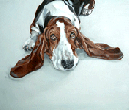 |
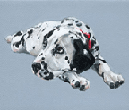 |
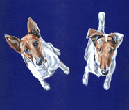 |
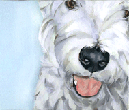 |
home | about
| gallery
| your
dog | sizes
& prices |
FAQ | dog
shop
blog | links
| testimonials
| contact us
site
designed by paintmydog © justine osborne 2002 - 2013
all
dog portraits, pictures, photos and text not to be reproduced without permission
from the artist
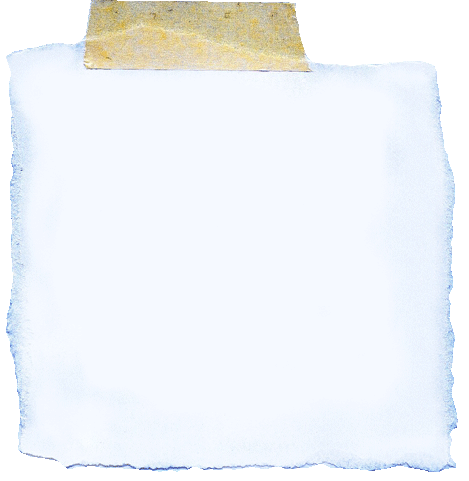 |